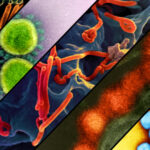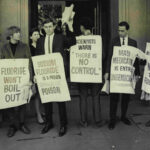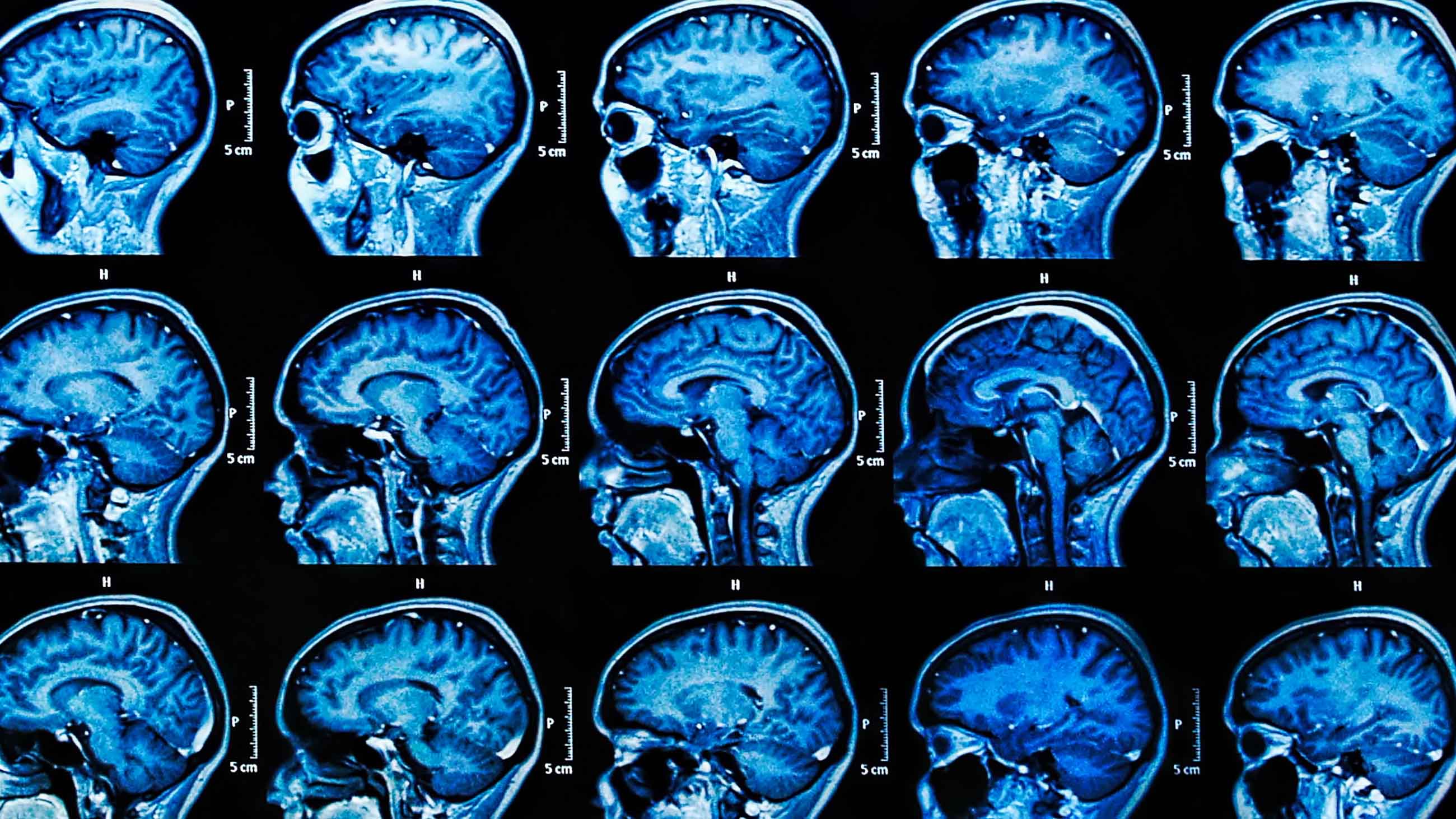Five Questions for Judith Edersheim
Can brain science predict when someone will commit a crime, or tell whether a defendant knew right from wrong? In recent decades, scientists and criminal justice experts have been trying to answer tantalizing questions like these — with mixed success.

“All crimes are not created equal,” says Judith Edersheim. “And the law can’t afford to treat them all as equal.”
Visual: Diane Anton
The science of predicting crime using algorithms is still shaky, and while sophisticated tools such as neuroimaging are increasingly being used in courtrooms, they raise a host of tricky questions: What kind of brain defect or brain injury should count when assessing a defendant’s responsibility for a crime? Can brain imaging distinguish truth from falsehood? Can neuroscience predict human behavior?
Judith Edersheim, an assistant professor of psychiatry at Harvard Medical School and also a lawyer who specializes in forensic evaluations, focuses her research on these gray areas. In 2009, she co-founded the Center for Law, Brain, and Behavior at Massachusetts General Hospital, with the goal of “translating neuroscience into the legal arena.” And on December 15, at an event at Brigham and Women’s Hospital in Boston, Edersheim will talk about the vulnerability of the aging brain, highlighting the case of a man affected by an undetected brain disease.
For this installment of the Undark Five, we asked her what brain imaging can reveal about the “criminal brain,” how relationships between brain functioning and behavior can inform the courtroom, and what controversies this iconoclastic science may raise. Questions and answers have been edited for length and clarity, and Undark has supplied some additional links.
UNDARK — Using brain imaging, scientists have identified correlations between certain brain abnormalities and criminal behaviors. Is there a signature for the “criminal brain”?
JUDITH EDERSHEIM — There may be no criminal minds; there may be criminal moments.
It’s premature to imagine that we have anything close to an image of a criminal mind. Most of the research into whether there is a brain signature for criminality focuses on a pure type of criminality, which is psychopathy. But even in that case, the problem of causation is very complex. There are lots of people who have psychopathic traits and they don’t murder anyone. Most psychopaths are not violent. Having a lack of empathy and treating people opportunistically doesn’t always result in a crime.
So perhaps what happened is not explainable by those traits, but just with the mundane motives and momentarily lapses in control that are really behind most crimes. There are all kinds of confounders of proof there. Between an image and a cause could be motive, it could be a psychiatric disease, it could be intoxication.
UD — How is brain science used to elucidate criminal behaviors?
JE — All crimes are not created equal. And the law can’t afford to treat them all as equal. It treats crime differently depending on the context and the motive. It treats spontaneous crime of passion differently from premeditated and planned events. And it treats people with the capacity to refrain differently from those with no capacity to refrain. Brain science helps us figure out who the person in front of us is: Is this a person who really had the capacity to refrain? Most people do, and choose not to.
But if you have a brain disorder, like a dementia, a tumor or an injury, that may be mitigating in a criminal context. The law will excuse you if this condition alters your behavior in a way that isn’t authentic to the person’s wishes, or at least pre-existing wishes.
UD — Given all the gray areas you have outlined, how is it possible to establish an admissible cause-and-effect relationship?
JE — American law is individuated: Each individual case is taken on its own merits, and the evidence presented will not be population-based evidence, it will be individual evidence. How do you prove that a lesion caused a behavior? Well, you can only prove that with collateral evidence of behavior.
If you have, for example, a brain scan that shows a tumor, you need evidence of a behavioral change before tumor and after tumor. Is this someone who has a long criminal history that predated any brain lesion? Then, likely, it is character or circumstance that caused this and not a lesion.
But if there is a distinct before and after that you can actually prove — from employment records, from friends, from employers, from schools — you can then argue that this person changed because of this tumor. There are tests besides brain scans that can help you with that causal inquiry. It may not be as glamorous as a brain scan, but it is how we determine whether someone is able to refrain and just didn’t, or is unable to refrain.
UD — Neuroimaging techniques fall into two categories: structural imaging and functional imaging. How much room is there for interpretation or manipulation, and how does that play out in the courtroom?
JE — A structural neuroimage is taken at a static point in time. An MRI, an X-ray, or a CT scan are meant to capture the state of someone’s bones, tissue, or tumors at a given point in time. As a statement of proof, that static image is very reliable, replicable, and ten thousand radiologists would say the same thing about what they see.
But an fMRI, a functional magnetic resonance image, is not a photographic image, it’s a statistically generated image. It’s an estimation of brain activity, based either on oxygen use or blood flow or glucose consumption. And it contains certain assumptions and certain decisions that are statistically relevant, not photographically relevant. When you make brain images with an fMRI, you take multiple images and average them and compare them to average brains. The colors on a fMRI are generated by the examiner. The level of contrast in those colors and the brightness are a selection based on certain thresholds of relevance.
What that means when you bring it to the courtroom is a complicated issue. You are taking group data, based on group research with average subjects, and you may make a conclusion about the relationship of the person who is the defendant to a whole group of subjects who are not the defendant.
That’s where you get into ethical and evidentiary problems. Using group data to predict individual behavior is a very complicated leap. Where does this individual fall in the spectrum of neurologic findings in those studies? Is this a person who has a smattering of those traits or is in the upper-level scale? And so far, we can’t individuate this, except with the behavioral metrics and tests that we have always used, such as the Hare Psychopathy Checklist, which is a written checklist of characteristics.
UD— Is neuroscience also being used against criminal defendants?
JE — It’s not just defense attorneys who look at neuroscience, it’s prosecutors. If you argue that your defendant by virtue of his brain and his genetics is unable to control his behavior to the point where he is a murderer, this doesn’t bode well for sentencing. No one wants to live next door to a person like that.
So this science is frequently used for one purpose: in death penalty trials, at the sentencing hearing. Defense lawyers use this evidence in mitigation because at that point, all that the jury is deciding is whether this person should die or whether this person should be in prison for the rest of his or her life. All you have to worry about is: “Is he as blameworthy as the worst person in this society, or does this brain finding mean that maybe he was able to choose less well?”
I don’t think the evidence is there for even that. But the argument has been made, for example in the case of Brian Dugan. It was argued that both his brain and testing showed that he was a psychopath, that he was therefore predisposed to his criminal behavior and that the jury should spare him the death penalty. The jury took it into account, but decided for the death penalty anyway.
Chloé Hecketsweiler, a 2016-17 Knight Science Journalism fellow, is a Paris-based journalist with Le Monde, specializing in the pharmaceutical and life sciences industries.










